If you have houseplants, you know that they can suffer when the air is too dry–leaves may turn brown and crispy, and flowers may drop. One solution is to buy a humidifier, but they can be expensive, and you have to remember to fill them and clean them regularly. You can also make your own humidifier for plants with items you probably already have around the house. This article will explain how to make a DIY humidifier for plants and how effective they are.
Do Humidity Trays Really Work?
When it comes to keeping your plants healthy, humidity is key. But what’s the best way to maintain the perfect level of moisture in the air?
Humidity trays are a popular option for plant parents, but do they really work?
Here’s what you need to know about using humidity trays for your plants.
The water evaporates and increases the humidity around the plant. Humidity trays are simply shallow trays filled with water that you place your plants on top of.
So, do they work?
However, they are not a perfect solution. The amount of humidity they add to the air will depend on the size of the tray, the amount of water in the tray, and the temperature and airflow in the room. Yes, humidity trays can be effective at increasing the humidity around your plants.

If you’re looking for a more reliable way to increase the humidity around your plants, consider investing in a humidifier. Humidifiers can be more expensive than humidity trays, but they will provide a steadier stream of moisture to your plants.
What Is a Pebble Tray?
A pebble tray is a type of humidifier that helps to increase the humidity around plants. Pebble trays can be purchased at most garden stores or online. They are typically used in greenhouses or during the winter months when the air is dry.
The amount of humidity that is added to the air depends on the size of the tray, the type of stone, and the amount of water that is used. The water will evaporate and help to increase the humidity around the plants. To use a pebble tray, fill the tray with water and then place it on top of the soil near the plants. Pebble trays work by evaporating water from the stones and into the air.

They are relatively inexpensive and easy to use. Pebble trays are a simple and effective way to increase the humidity around plants.
What Does a Pebble Tray Do?
By placing a layer of pebbles or rocks in a tray and then adding water, you can create a mini-humidifier that will help your plants to thrive. A pebble tray is a simple device that can be used to increase the humidity around your plants.
Pebble trays are an easy and effective way to increase the humidity around your plants. By adding a layer of pebbles or rocks to a tray and then adding water, you can create a mini-humidifier that will help your plants to thrive.

Pebble trays are an easy and effective way to increase the humidity around your plants. By adding a layer of pebbles or rocks to a tray and then adding water, you can create a mini-humidifier that will help your plants to thrive.
Pebble trays are an easy and effective way to increase the humidity around your plants. By adding a layer of pebbles or rocks to a tray and then adding water, you can create a mini-humidifier that will help your plants to thrive.
How to Make a Pebble Tray at Home
The water will evaporate and help to keep your plants moist. All you need is a shallow dish, a layer of pebbles, and water. A pebble tray is an easy way to add humidity to your home and help your plants thrive. Simply fill the dish with water and place it under your plants.

Pebble trays are especially helpful during the winter when the air is dry and can cause your plants to suffer. By adding a pebble tray, you can help your plants stay healthy and hydrated.
A shallow tray suited to location
By adding water to the tray, the humidifier will help to increase the moisture in the air around the plant. A shallow tray humidifier is a great option for a plant that is located in a dry area. This can be a great way to help your plant to thrive.
Decorative Pebbles or Rocks
They can be used to accentuate flower beds, line walkways, or as a border for your garden. Decorative pebbles or rocks can be used in a number of ways to improve the look of your home. They can also be used to add interest to potted plants.
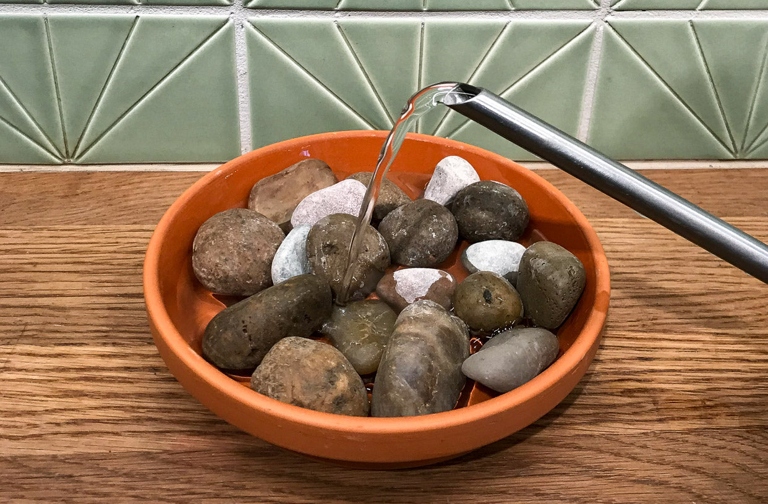
They’re also relatively inexpensive, so you can get a lot of bang for your buck. Pebbles and rocks come in a variety of colors and sizes, so you can find the perfect ones to complement your home’s style.
They’re an easy and affordable way to make your home look more polished and put-together. If you’re looking for a way to add a little something extra to your home’s décor, consider using decorative pebbles or rocks.
Clean Water
While you can certainly buy a commercial humidifier, you might be surprised to learn that you can also make your own DIY humidifier for plants. When it comes to keeping your plants healthy, one of the most important things you can do is make sure they have access to clean water.
Second, you need to use distilled water, as this will prevent any mineral buildup in the humidifier. First, you need to make sure that the container you use is clean and sterile. So, how effective are DIY humidifiers for plants? It turns out that they can be quite effective, as long as you take a few things into consideration.
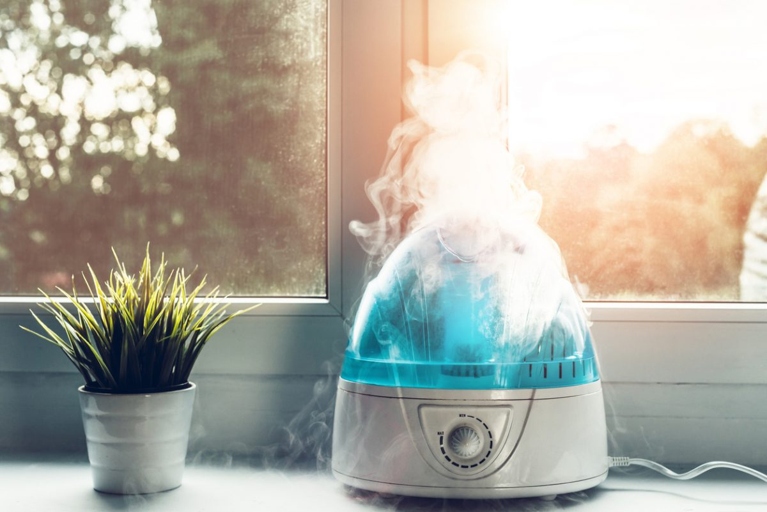
Finally, you need to be sure to change the water regularly, as stagnant water can become a breeding ground for bacteria. If you keep these things in mind, you can rest assured that your plants will stay healthy and hydrated.
To Build Your Tray
If you’re looking for a quick and easy way to improve the health of your plants, a DIY humidifier may be the answer. While there are many different ways to build your own humidifier, they all work by adding moisture to the air. This can help to prevent your plants from drying out, and can also help to keep them free of pests and diseases.
While DIY humidifiers may not be as powerful as commercial units, they can still be quite effective. You can find all of the materials you need at your local hardware store. One of the best things about them is that they’re very inexpensive to build.
Finally, add water to the container and place it near your plants. To build your own humidifier, start by drilling a hole in the bottom of a plastic container. The tubing should be long enough to reach the bottom of the container. Next, insert a length of tubing into the hole.
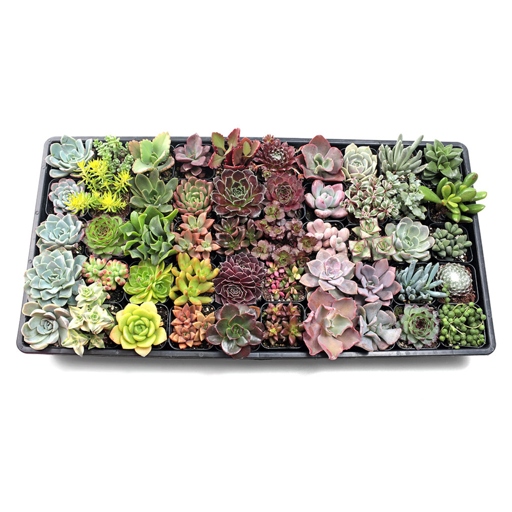
This will help to circulate the moist air and keep your plants healthy. If you’re looking for a more powerful humidifier, you can try adding a small fan to your setup.
How to Use a Pebble Tray
A pebble tray is a shallow tray filled with pebbles and water. If you want to add humidity to your home but don’t want to use a traditional humidifier, you can try using a pebble tray. You can place the tray on top of a radiator or other heat source, which will help evaporate the water and add moisture to the air.
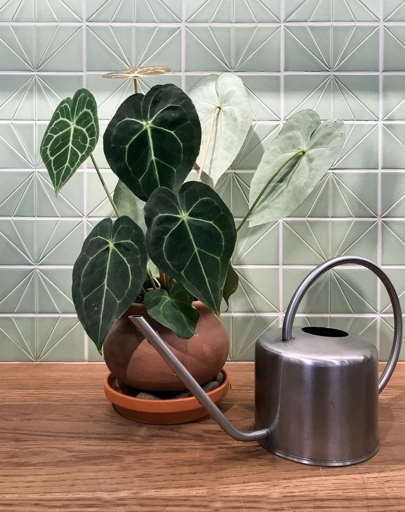
To use a pebble tray, simply fill the tray with water and pebbles. You may need to add water to the tray every few days to keep the humidity levels up. Place it on top of a radiator or other heat source, and allow the water to evaporate.
They are easy to use and can be placed on any heat source. Pebble trays are a great way to add humidity to your home without using a traditional humidifier.
The Benefits of Humidifiers for Houseplants
While humidifiers can be beneficial for plants, it is important to understand how they work and how to use them properly. If you have houseplants, you may have considered using a humidifier to help them thrive.
This can help to prevent your plants from drying out and can also help to improve the overall health of your plants. Humidifiers work by adding moisture to the air. There are a few different types of humidifiers, and each type has its own set of benefits.
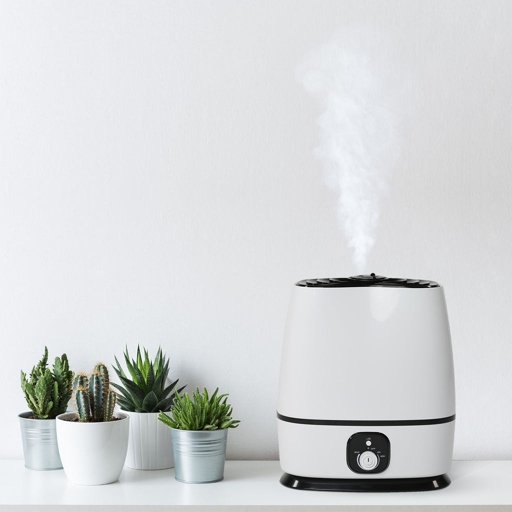
This type of humidifier uses high-frequency sound waves to create a fine mist. One type of humidifier is an ultrasonic humidifier. The mist is then released into the air, and it can help to moisturize your plants.
Another type of humidifier is a cool mist humidifier. This type of humidifier is often used in greenhouses or in rooms where plants are kept. This type of humidifier uses a fan to circulate the air and create a cool, moist environment.
This type of humidifier uses a heating element to create a warm, moist environment. Finally, there is the warm mist humidifier. This type of humidifier is often used in rooms where plants are kept.
If you are considering using a humidifier for your plants, it is important to choose the right type of humidifier for your needs. Each type of humidifier has its own set of benefits, and you will need to decide which type of humidifier is best for your plants.
Signs Your Plant Needs More Humidity
If your plant is wilting, has dry or brown leaves, or is dropping leaves, it may be a sign that it needs more humidity. You can create a more humid environment for your plant by using a humidifier.

There are a few things to keep in mind when using a humidifier for your plants. Second, be sure to keep the humidifier clean to prevent the spread of bacteria. Humidifiers can be used to increase the humidity in your home, and they can be very effective for plants. First, make sure that the humidifier is the right size for the room.
You can try misting your plant with water, or placing it on a pebble tray. If you notice that your plant is still not looking its best after using a humidifier, it may be a sign that it needs more humidity than a humidifier can provide.
Which Plants Enjoy Pebble Trays?
Here are a few plants that will love being grown in a pebble tray: Pebble trays are a great way to increase humidity for your plants. They are especially effective for tropical plants that enjoy high humidity.
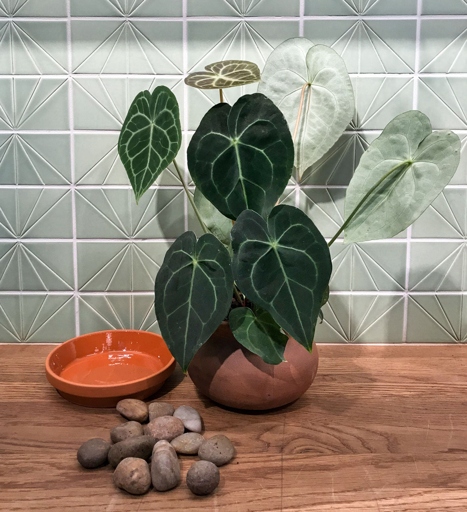
-Ferns
The water will evaporate and increase the humidity around the plants. All you need is a shallow tray filled with gravel or small stones, and water. Be sure to check the water level often, and add more as needed. Pebble trays are an easy and inexpensive way to create a humid environment for your plants.
Pebble Tray vs Humidifier (Pros and Cons)
Two popular options are pebble trays and humidifiers. When it comes to keeping your plants healthy, there are a number of different methods you can use. But which is the better option? Here’s a look at the pros and cons of each.
Pebble trays are a great option if you’re looking for an affordable way to keep your plants healthy. However, pebble trays can be a bit messy, and they don’t work well in dry climates. They’re also easy to set up and don’t require any special equipment.
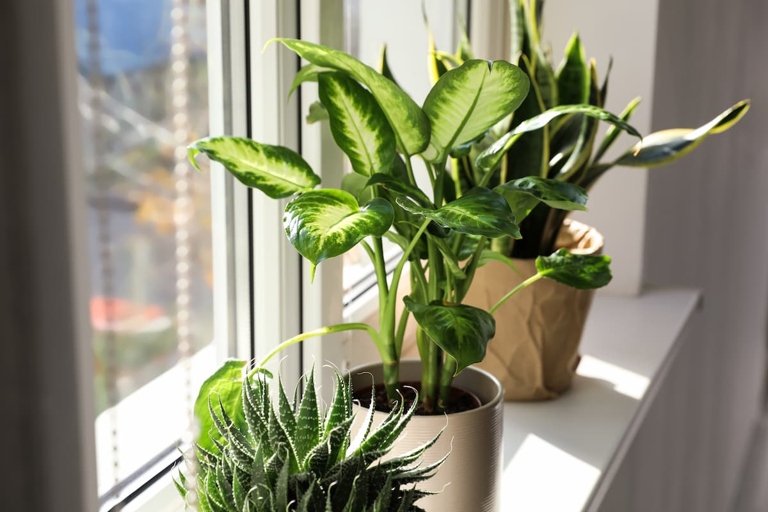
They’re also very easy to use, and you can find them in a variety of sizes to fit your needs. Humidifiers, on the other hand, are a bit more expensive, but they’re much more effective at keeping your plants healthy. However, humidifiers can be a bit noisy, and they require regular maintenance.
Pros and Cons: Pebble Tray
They are simple to set up and can be quite effective at increasing the humidity around plants. Pebble trays are often used as a DIY humidifier for plants. However, there are some potential drawbacks to using a pebble tray as a humidifier.
One potential downside of using a pebble tray is that the pebbles can become dirty and need to be cleaned regularly. If the pebbles are not cleaned, they can harbor bacteria and fungi, which can be harmful to plants.
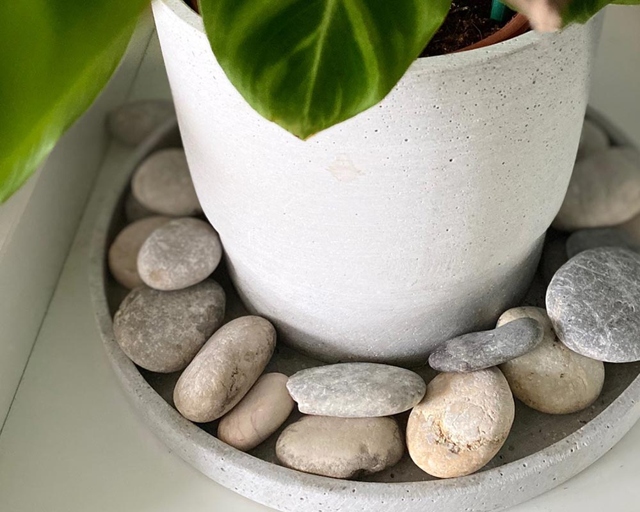
Another potential downside is that pebble trays can be difficult to regulate. Conversely, if the tray is not full enough, it will not be effective at increasing the humidity. If the tray is too full of water, the humidity around the plants can become too high, which can be harmful to them.
Overall, pebble trays can be a helpful DIY humidifier for plants, but there are some potential drawbacks to using them. If you decide to use a pebble tray, be sure to clean the pebbles regularly and monitor the humidity around the plants to ensure that it does not become too high or too low.
Pros and Cons: Electric Humidifier
They are also very easy to use and can be found at most stores. On the plus side, electric humidifiers are very effective at increasing the humidity in a room. When it comes to electric humidifiers, there are both pros and cons to take into consideration. On the downside, electric humidifiers can be quite expensive, and they can also be a fire hazard if not used properly.
Pebble Tray vs Humidifier: Which is Better?
Both options can help increase the humidity around your plants, but a pebble tray is generally more affordable and easier to DIY. If you’re wondering whether a pebble tray or humidifier is better for your plants, there are a few things to consider. Humidifiers, on the other hand, tend to be more effective at increasing humidity levels.

If you’re on a tight budget, a pebble tray is a great option. So, which is the better option for you? But, if you’re willing to spend a little more money and put in a bit of effort, a humidifier is the way to go. It really depends on your budget and how much effort you’re willing to put into setting up a humidifier.
Personal Experience
I’ve been using a DIY humidifier for my plants for a few months now, and I’ve found it to be very effective. But with the humidifier, they’re doing much better. I live in a dry climate, so my plants were always struggling to stay hydrated.
My plants are happier and healthier, and I’m saving money on watering them. I turn it on when the plants need a boost of moisture, and it really does make a difference. I fill the humidifier with water and set it on my plant stand.
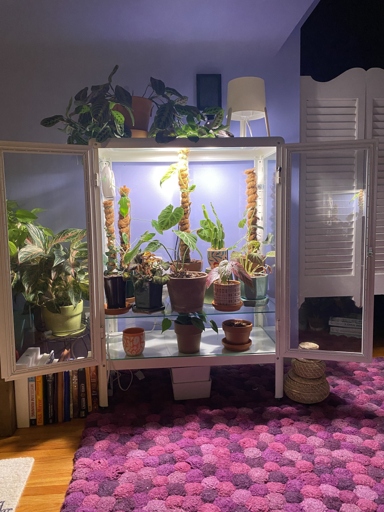
It’s an easy and inexpensive way to help them stay hydrated and healthy. If you live in a dry climate, I highly recommend trying a DIY humidifier for your plants.
Frequently Asked Questions
1. What is a humidifier and how does it work?
A humidifier is a device that increases the humidity in the air. It does this by either evaporating water into the air or by releasing a stream of water vapor.
2. Why would I want to use a humidifier for my plants?
There are a few reasons why you might want to use a humidifier for your plants. One reason is that it can help to prevent your plants from getting too dry. Another reason is that it can help to prevent pests and diseases from attacking your plants.
3. How do I know if my plants need a humidifier?
One way to tell if your plants need a humidifier is to check the leaves. If the leaves are starting to turn brown or are wilting, then it might be a good idea to use a humidifier. Another way to tell is to check the soil. If the soil is dry and crumbly, then your plants might need some extra moisture.
4. What are some of the benefits of using a humidifier for my plants?
There are a few benefits of using a humidifier for your plants. One benefit is that it can help to keep your plants healthy. Another benefit is that it can help to prevent pests and diseases from attacking your plants. Additionally, using a humidifier can help to increase the growth of your plants.
5. Are there any downsides to using a humidifier for my plants?
There are a few downsides to using a humidifier for your plants. One downside is that you will need to refill the humidifier regularly. Another downside is that humidifiers can be a bit noisy. Additionally, if you use too much water vapor, it can actually harm your plants.
6. What type of humidifier should I use for my plants?
There are a few different types of humidifiers that you can use for your plants. One type is an evaporative humidifier. This type of humidifier uses a wick to absorb water and then evaporates it into the air. Another type of humidifier is a ultrasonic humidifier. This type of humidifier uses ultrasonic waves to create a mist of water vapor.
7. How often should I use a humidifier for my plants?
How often you use a humidifier for your plants will depend on a few factors. One factor is the type of humidifier that you are using. Another factor is the size of your plants. Additionally, the climate that you live in will also affect how often you need to use a humidifier.
8. How do I know if I am using too much water vapor?
If you notice that your plants are starting to wilt or that the leaves are turning brown, then you might be using too much water vapor. Additionally, if you notice that the soil is getting soggy, then you might be using too much water vapor.
9. Can I use a humidifier for my indoor plants?
Yes, you can use a humidifier for your indoor plants. Just be sure to monitor the humidity levels and to not use too much water vapor.
10. Where can I buy a humidifier for my plants?
You can buy a humidifier for your plants at most home and garden stores. You can also find them online.
Final thoughts
Overall, humidifiers can be a great way to improve the health of your plants. They are relatively inexpensive and easy to use, and can make a big difference in the moisture levels of your home. However, it is important to remember that they are not a cure-all, and you will still need to provide your plants with proper care and attention.
